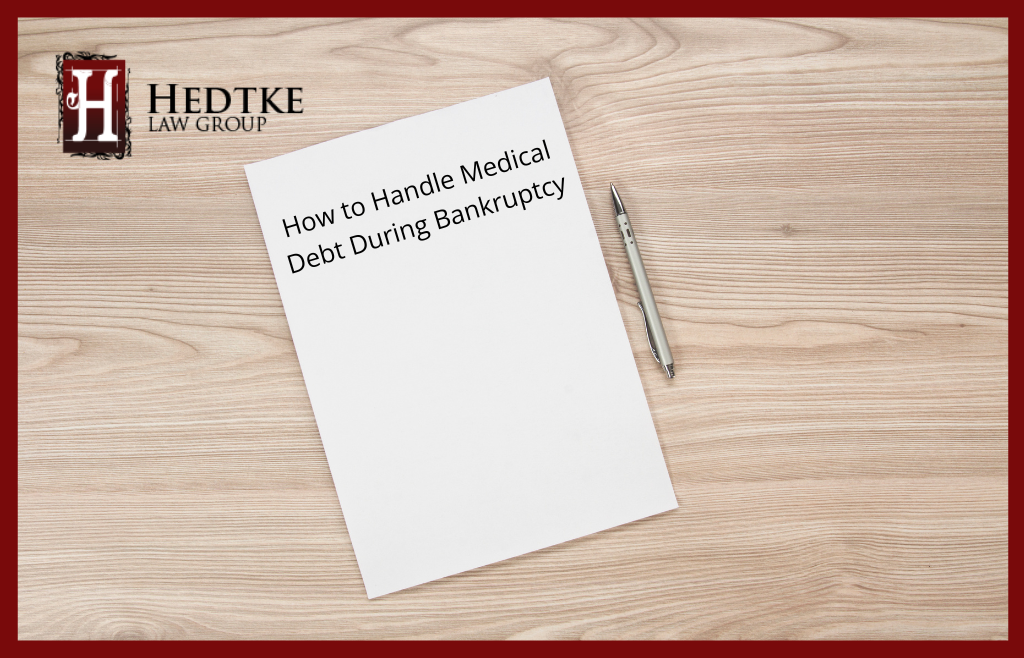
Summary:
Medical debt counts as unsecured debt, meaning it can often be wiped out through bankruptcy. Chapter 7 typically erases medical bills entirely if the filer qualifies, while Chapter 13 allows repayment over time before discharge. Reviewing all medical and household debts, then choosing the right filing strategy, helps protect assets and create a clean financial restart.
Unexpected medical bills can grow faster than most people can pay them. Even with insurance, hospital stays, emergency care, or long-term treatment can push finances to the edge. When the total balance keeps climbing, bankruptcy can become a practical solution. But before filing, it helps to know how medical debt is treated and what options can bring genuine relief.
Medical Debt as Unsecured Debt
Medical debt falls into the same category as credit card bills and personal loans. It’s called unsecured debt because it isn’t tied to collateral like a house or a car. This classification matters because it affects how the court handles it during bankruptcy.
Hospitals and medical offices may send unpaid bills to collections, which can hurt credit and lead to lawsuits or wage garnishment. Filing for bankruptcy places an automatic stay on those actions, meaning creditors must stop collection efforts immediately. This pause gives time to organize finances and decide how to move forward under the court’s supervision.
Chapter 7 Bankruptcy and Medical Debt
Chapter 7, also known as liquidation bankruptcy, clears unsecured debts (including medical bills) in full once the case is discharged. To qualify, the filer must pass a means test showing limited disposable income after basic expenses. In many cases, individuals can keep essential property through California’s exemption system, which protects items like a primary vehicle, household goods, and retirement funds.
When the discharge is granted, the filer is no longer legally responsible for medical debt that existed before filing. However, any new medical bills incurred after the filing date are not covered. This means timing the filing matters. If more medical treatment is expected, it can be beneficial to wait until those bills have been issued before submitting the case.
Chapter 13 Bankruptcy and Medical Debt
Chapter 13 creates a structured repayment plan lasting three to five years. Instead of erasing medical debt immediately, it folds those balances into the plan. Debts are paid based on income and available funds after covering living costs. At the end of the repayment term, remaining eligible unsecured debts, including medical bills, are discharged.
This option works well for people with steady income who do not qualify for Chapter 7 or who want to protect assets that might be sold in liquidation. Chapter 13 also helps stop interest from piling up and keeps creditors from taking further action while the plan is active.
Best Practices Before Filing
Gather every bill, collection letter, and statement related to medical costs. Creditors sometimes sell or transfer accounts, and missing information can create confusion later. Check credit reports for duplicate entries or errors—each account listed should accurately reflect the balance and creditor.
Consider discussing payment arrangements with healthcare providers before filing. Some hospitals and clinics offer hardship programs or discounts that reduce the total owed. Even small adjustments can make a difference in deciding which bankruptcy option to pursue.
It’s also worth reviewing all household debts together. Medical bills rarely stand alone. Evaluating other unsecured debts helps determine whether bankruptcy provides the most value or if an alternative approach, like a structured payment agreement, would suffice.
After the Discharge
Once medical debts are discharged, it’s wise to rebuild financial stability immediately. Create a budget that factors in future healthcare costs, even for routine visits. Maintaining an emergency fund can prevent new medical debt from becoming overwhelming again. Checking credit reports every few months ensures that discharged accounts show as resolved.
If a collection agency continues contacting you about discharged medical debt, keep written proof of the discharge order and report the violation to your attorney or the court. The discharge order is a legal document, and creditors must follow it.
Bankruptcy can eliminate medical debt and provide breathing room for a fresh start, but each case depends on income, assets, and timing. Hedtke Law Group helps Californians determine the right filing strategy and guides them through the process with clear, practical advice. To discuss how bankruptcy may relieve your medical debt, contact us for a consultation.



